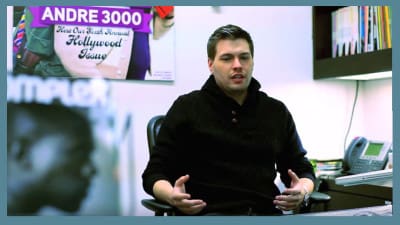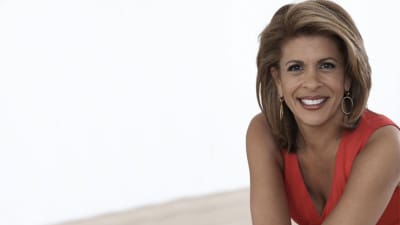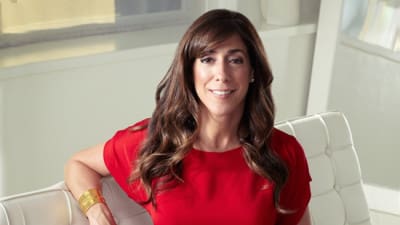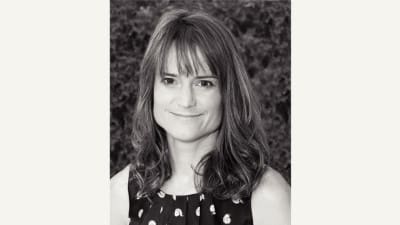To folks used to slowly toiling their way up the ladder in the world of magazines, Noah Callahan-Bever may seem to have shot up really quickly to the role of EIC at Marc Ecko’s Complex. But Callahan-Bever has been working at urban music/culture magazines in New York since before he graduated high school, and had plenty of seasoning at Vibe, Mass Appeal, The Source and MTV News on his way up.
Here he talks to mediabistro.com about his career path, where Complex fits in the world of men’s magazines, and his collaboration last year on 50 Cent’s biography.
Also on Mediabistro


Name: Noah Callahan-Bever
Position: Chief Content Officer and Editor-in-chief, Complex Magazine, as well as Four-Pins, First We Feast, Pigeons & Planes, Sole Collector, Green-Label, Collider.
Birthdate: 5/2/79
Hometown: New York City
Education: A few years of college at NYU (dropped out)
Marital status: Single
First section of the Sunday Times: The homepage, though I’ll occasionally buy the print edition if the magazine looks interesting
Favorite television show: Seinfeld
Guilty pleasure: Will Smith movies
Last book read: The Elementary Particles by Michel Houellebecq
Twitter handle: @N_C_B
You’re a pretty young guy to be editor-in-chief of a major magazine — tell me a little bit about your career up until now. How did you get started in magazines and what was the draw?
I got started when I was 17. I was a senior in high school and AP classes wrapped up in May, so I had a month of downtime when my school made me find an internship program for the month before graduation.
So, in anticipation of that, I reached out in January to the makers of this small, independent magazine called ego trip — they’re the guys who do Miss Rap Supreme and The White Rapper Show on VH1, and have subsequently stopped doing the magazine — and I became the intern who wouldn’t go home.
Had you always been into writing-related stuff?
Not at all. I was just really into rap music and I really liked comics, and I originally wanted to be a comic-book writer.
But at the time there was a really vibrant independent magazine scene that had cropped up around New York — graffiti, hip-hop and such things — and ego trip was absolutely hilarious — super snarky, very informed and very critical of all kinds of music.
I’d never read a magazine before that dealt with rock and with pop from the perspective of someone who was originally a hip-hop fan, which is where I was coming at it from. I basically just cold-called them and kept leaving messages until they finally called me back.
A lot of the book was a collaborative effort, so here I was at 17, and I got to sit in to watch these guys who are essentially writing most of the cover stories for Vibe and The Source at the time. They had sort of formed this as an outlet because they wanted to write freely about music and not be constrained by the kind of commercial issues that The Source and Vibe had to deal with.
I started out doing this comic strip for the magazine called “Jiggy,” which was a lampoon of “Ziggy,” only putting Ziggy in hip-hop scenarios. Then someone who was supposed to write a Chubb Rock review fell out, and I said “I could write it.”
And then you pretty quickly moved on to Vibe that summer.
After the internship was over, I needed a summer job, and Sasha knew this guy who got promoted to be the research chief there, and he was looking to put together a research department. He said “We’d kind of have to lie about how old you are, but I can put in a good word.” So we sat down and he was cool with it, and was like “Okay, you can be a fact-checker, but as far as the higher-ups are concerned, you’re 20.”
So I fact-checked four issues of Vibe that summer, and in the middle of that I found myself in another situation where a writer bailed on a 400-word thing, and the music editor got informed of this while she was standing at my desk.
By then I was pretty familiar with how raw copy came in, and so I said “I’d like to try.”
And that set your career in motion?
Well, so I went to college and Vibe launched Blaze magazine. The editor-in-chief of it had been the managing editor of Vibe and reached out to me, and I was an editorial assistant the next summer.
And then I was a contracted writer for the rest of Blaze‘s existence — at which point I kind of dropped out of college. I wrote for MTV News for a while and then ended up being editor-in-chief of Mass Appeal.
From there I went back to Vibe as a senior editor, and then came to Complex in 2005 as a deputy, and was promoted a couple of years later.
Clearly Complex is a different kind of men’s magazine from classic titles like Esquire, GQ, Details, etc. — and not just because Marc Ecko is behind it. Who’s your ideal reader and how do you think what you do is different from other men’s titles?
The reason I was drawn to Complex and the reason I think I’ve been successful is that I’m very much making the magazine for people like myself.
My generation of people grew up reading The Source, and XXL, and Big Brother and Thrasher and Skateboard. And as we got into our early 20s, you grow beyond being strictly interested in the niche culture that you were into before.
But there’s no real obvious next step for most of those kids. The aim of Complex to me is to create a magazine that is informed by the sensibilities of these adolescent interests but is also there to open your world up and show you new stuff, and acknowledge that you’re becoming a man.
How do you approach putting together an issue?
We have — out of seven issues a year — three or four with themes. With something like “Style and Design,” it’s such a lynchpin for [the magazine’s] culture because Complex‘s aesthetic is so heavily influenced by the worlds of graphic design, graffiti, and the styling of products.
We make that one of our fattest issues of the year, and it’s also a good opportunity to put a stake in the ground for something that’s so uniquely us. But sometimes, for instance, there’s something like nine comic book movies coming out this summer, and we’ll do a package around that.
Then it’s all about what my design director Tim, who is a comic book enthusiast, thinks about it. Or Bradley, my lifestyle editor, who is an authority in sneakers and sneaker culture. Or my senior staff writer Justin, who has a voracious appetite for movies and Hollywood stuff.
Every person on the staff has a very specific world that they are the master and commander of — and so whenever we turn our attention to that thing we have this incredibly informed person with an incredible voice who can give their spin on it and can tell you how these things can be interesting to the very informed person.
If we write about Lil Wayne, we want to write about him to open him up to a reader who doesn’t necessarily know rap that well. But then we’ll have an interview that’s more hard-hitting that most of the music mags that cover him.
What’s the deal with the double-cover? Seems like it would be expensive to do two cover shoots every time you put out an issue.
It is, but we’re seven times a year, so it’s no more costly [than it would be for a monthly]. The magazine started with two covers from the first issue, and it was heavily influenced by Japanese sneaker magazines that influenced the design of Lucky — and they often have two covers.
And if you look at what kinds of covers sell magazines for young men, it’s sexy-looking girls and male celebrities who say bombastic, outrageous things — particularly rappers, but occasionally certain very compelling Hollywood people.
When Marc [Ecko] and the original team were coming up with it, they figured that if they could do two covers they could get the best of both worlds. And there have been times when we’ve nailed that incredibly well, with a girl who is really hot, and someone like Lil Wayne saying “Fuck Jay-Z.”
It also serves to break apart the two sections of the magazine and show that what we’re doing has two very distinct parts that offer different experiences.
With Complex so involved with niche culture, do you think it would ruin things if you got too big, effectively making your “niches” mainstream?
Our intention was never sort of to make the most mainstream magazine. The beauty is the cross-pollination we get between the niche cultures — if you look at what’s going on in mainstream culture, it’s the niche cultures that are driving everything.
So in a certain way, I do feel like we have slightly limited ambition, but what we are trying to do is create real, lasting relationships with our readers. If you go super-pop and mainstream, you’re not making the same connections with consumers as you are when you’re doing something that’s a little bit more grounded and niche.
I want the [consumer’s] experience to be something like “Hey, me and my friends know about a lot of cool shit, that you’ll probably be into too — come hang out with us for two hours.”
I want to be super-credible about the stuff we talk about, but also inclusive, and make it accessible for people that might not be hip to all of it.
You co-authored a biography of 50 Cent. Tell me about that.
He was incredibly forthcoming.
That basically just came together because I had done one the first interviews with him for Blaze in 1998, and I interviewed him about 15 times subsequently. I know him fairly well. So when the book project came up, he had his book company reach out to me.
We sat down over the next six months and did a bunch of interviews, and I whipped it up into one cohesive narrative.
What’s your position on boss Marc Ecko putting an asterisk on Barry Bonds’ home run ball? For or against?
I think baseball is a dreadfully boring sport to watch unless you’re in person, so I don’t really care.
But I think it was really cool that Marc did that — it created a really interesting dialogue.
How involved is he in the day-to-day running of the magazine?
In a lot of ways, I think the magazine is an expression of the aesthetic that he established 15 years ago with the clothing brand. On the day-to-day, he and I sit and chat about pop culture and what’s going on in the world.
I keep him informed of what we’re doing, but he’s not particularly involved on the day-to-day pages and what we do with celebrities.
I’ll bounce ideas off of him because he’s smart as shit, and can often act as a catalyst in my thinking about something. And sometimes he’ll present me with a challenge like “I want you to figure out how to do a green issue that is responsible and forces our consumers to think of the environment — but do it in a credible way, because we are, after all a magazine of consumption.” But he was very hands-off about it.
It’s just like “Here’s your challenge, go to it.”
Tell me a little about what Complex is doing on the Web.
Everywhere else that I’ve worked, the Web has been kind of an afterthought, run by a B-team, kind of a footnote on the brand. We’re looking at it in a much more pro-active way, almost in a New York Times model where it’s like the Web site is the daily paper and the magazine is like the New York Times magazine.
All my editors are producing daily content for the Web, whether it be for the blogs or features, and the art and photo departments are always doing the direction on both.
As a bi-monthly, sometimes it just seems like ages between issues, and this is an opportunity for us to have this daily interaction with our consumers. It’s exciting because I feel like it’s a challenge to me and my staff to find new ways to think about our content and to tell the same stories in different ways.
I’ve got seasoned features editors who are fumbling around trying to do video, and for them it’s awesome — it’s like “I haven’t used my brain this actively in years.” They’re trying to figure out how to produce a video shoot and edit it, and tell the same story that’s going to be on the cover of the next issue — but in video.
This interview has been edited for length and clarity.








